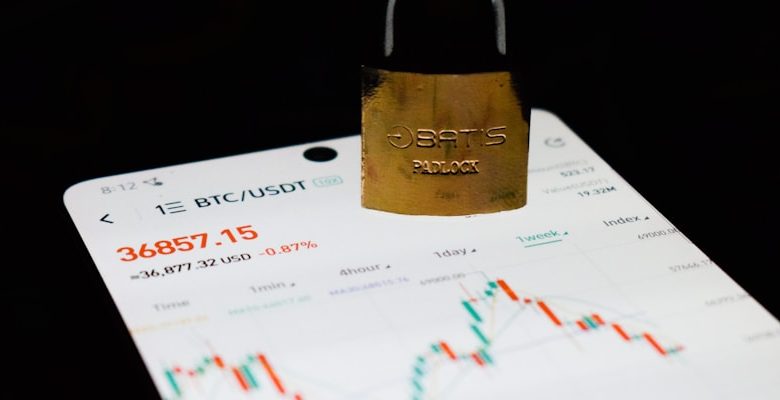How Innovative Staking Models Are Changing Crypto Investments

- Understanding the Evolution of Staking in the Crypto Market
- Exploring the Benefits of Proof of Stake vs. Proof of Work
- The Rise of Delegated Proof of Stake (DPoS) in Crypto Investments
- Comparing Traditional Investment Models with Staking
- The Role of Masternodes in Revolutionizing Crypto Staking
- Challenges and Opportunities in the World of Innovative Staking Models
Understanding the Evolution of Staking in the Crypto Market
The evolution of staking in the cryptocurrency market is a fascinating development that is changing the way investors approach their investments. Staking allows investors to earn rewards by participating in the validation of transactions on a blockchain network. This process helps secure the network and maintain its integrity.
One of the key benefits of staking is that it provides a way for investors to earn passive income on their cryptocurrency holdings. Instead of simply holding onto their coins and hoping for their value to increase, investors can actively participate in the network and earn rewards in the form of additional coins. This can help offset the volatility of the cryptocurrency market and provide a more stable source of income.
Innovative staking models are constantly being developed to meet the changing needs of investors. Some projects are exploring new ways to incentivize participation in staking, such as by offering higher rewards for longer staking periods or by introducing new tokenomics models. These innovations are helping to make staking more accessible and attractive to a wider range of investors.
As staking continues to grow in popularity, it is important for investors to understand the risks and rewards associated with this investment strategy. While staking can be a lucrative way to earn passive income, it also comes with its own set of challenges. Investors should carefully research the projects they are staking with and be aware of the potential risks involved.
Overall, the evolution of staking in the cryptocurrency market is an exciting development that is changing the way investors approach their investments. By staying informed and being aware of the latest trends in staking, investors can take advantage of this innovative investment strategy and potentially earn significant rewards.
Exploring the Benefits of Proof of Stake vs. Proof of Work
When it comes to exploring the benefits of Proof of Stake (PoS) versus Proof of Work (PoW), it is essential to understand the differences between these two consensus mechanisms in the world of cryptocurrency investments. PoS has gained popularity due to its energy efficiency and lower barriers to entry, making it an attractive option for investors looking to stake their assets and earn rewards.
One of the key advantages of PoS is its ability to incentivize token holders to participate in securing the network by staking their coins. This process involves locking up a certain amount of cryptocurrency as collateral to validate transactions and create new blocks. In return, stakers receive a portion of the block rewards, encouraging them to actively contribute to the network’s security and decentralization.
On the other hand, PoW relies on miners competing to solve complex mathematical puzzles to validate transactions and create new blocks. While PoW has been the traditional consensus mechanism for cryptocurrencies like Bitcoin, it is often criticized for its high energy consumption and centralization risks. In contrast, PoS offers a more sustainable and environmentally friendly alternative that aligns with the growing demand for greener blockchain technologies.
The Rise of Delegated Proof of Stake (DPoS) in Crypto Investments
The rise of Delegated Proof of Stake (DPoS) in the world of crypto investments has been a game-changer for many investors. This innovative staking model offers a more efficient and democratic way of securing blockchain networks compared to traditional Proof of Work (PoW) systems.
DPoS allows token holders to vote for a select group of delegates who are responsible for validating transactions and securing the network. These delegates are incentivized to act in the best interest of the network, as they can be voted out if they do not perform their duties properly.
One of the main advantages of DPoS is its scalability. Since only a limited number of delegates are responsible for validating transactions, the network can process a higher volume of transactions at a faster rate. This makes DPoS an attractive option for investors looking to participate in staking activities without having to worry about the energy-intensive nature of PoW systems.
Another key benefit of DPoS is its democratic nature. Token holders have the power to vote for delegates who they believe will act in the best interest of the network. This gives investors more control over the direction of the network and helps promote transparency and accountability among delegates.
Overall, the rise of Delegated Proof of Stake (DPoS) has opened up new opportunities for investors looking to earn passive income through staking activities. By offering a more efficient and democratic way of securing blockchain networks, DPoS has become a popular choice for many crypto investors around the world.
Comparing Traditional Investment Models with Staking
When comparing traditional investment models with staking, it becomes evident that staking offers a more innovative approach to crypto investments. Traditional investment models often involve buying assets and holding them for a long period, hoping for an increase in value. On the other hand, staking allows investors to participate in network validation and earn rewards in the form of additional tokens.
One key difference between traditional investments and staking is the level of participation required from investors. While traditional investments may require a more hands-off approach, staking requires investors to actively contribute to the network by locking up their tokens. This not only helps secure the network but also incentivizes investors to hold onto their tokens for a longer period.
Another advantage of staking over traditional investments is the potential for higher returns. Staking rewards can vary depending on the network and the amount of tokens staked, but they often offer a higher return on investment compared to traditional models. This can be especially appealing to investors looking to maximize their profits in the crypto market.
Moreover, staking provides a more predictable source of income for investors. Unlike traditional investments, where the value of assets can fluctuate wildly, staking rewards are more stable and consistent. This can help investors better plan their finances and make informed decisions about their investment strategies.
Overall, staking offers a more dynamic and engaging way to invest in the crypto market compared to traditional models. With the potential for higher returns, more active participation, and a more stable source of income, staking is changing the way investors approach their investment strategies in the digital asset space.
The Role of Masternodes in Revolutionizing Crypto Staking
One of the key innovations in the world of crypto staking is the introduction of masternodes. Masternodes play a crucial role in revolutionizing the staking process by providing additional services to the network. These nodes perform various functions such as facilitating instant transactions, enabling private transactions, and participating in governance decisions.
Unlike regular staking, where users simply lock up their coins to secure the network and earn rewards, masternodes require a higher level of commitment. In order to run a masternode, users must typically hold a certain amount of coins as collateral. This not only helps to secure the network but also incentivizes users to actively participate in the governance and maintenance of the blockchain.
By running a masternode, users can earn additional rewards on top of their staking rewards. This provides an extra incentive for users to contribute to the network and helps to decentralize the governance of the blockchain. Masternodes also play a crucial role in improving the overall security and efficiency of the network, making them an integral part of many cryptocurrency projects.
Challenges and Opportunities in the World of Innovative Staking Models
As innovative staking models continue to reshape the landscape of crypto investments, there are both challenges and opportunities that investors need to be aware of. One of the main challenges is the complexity of these new models, which can make it difficult for inexperienced investors to navigate. However, this complexity also presents an opportunity for those who are willing to put in the time and effort to understand how these models work.
Another challenge is the risk involved in staking your assets, as the value of cryptocurrencies can be volatile and unpredictable. This risk can be mitigated by diversifying your staking portfolio and carefully monitoring the market trends. On the other hand, the opportunity lies in the potential for high returns that staking can offer, especially in comparison to traditional investment methods.
Additionally, there is a challenge in terms of regulation, as the regulatory framework surrounding staking models is still evolving. This uncertainty can make some investors hesitant to participate in these new opportunities. However, it also presents an opportunity for regulators to create a more stable and secure environment for staking activities.



